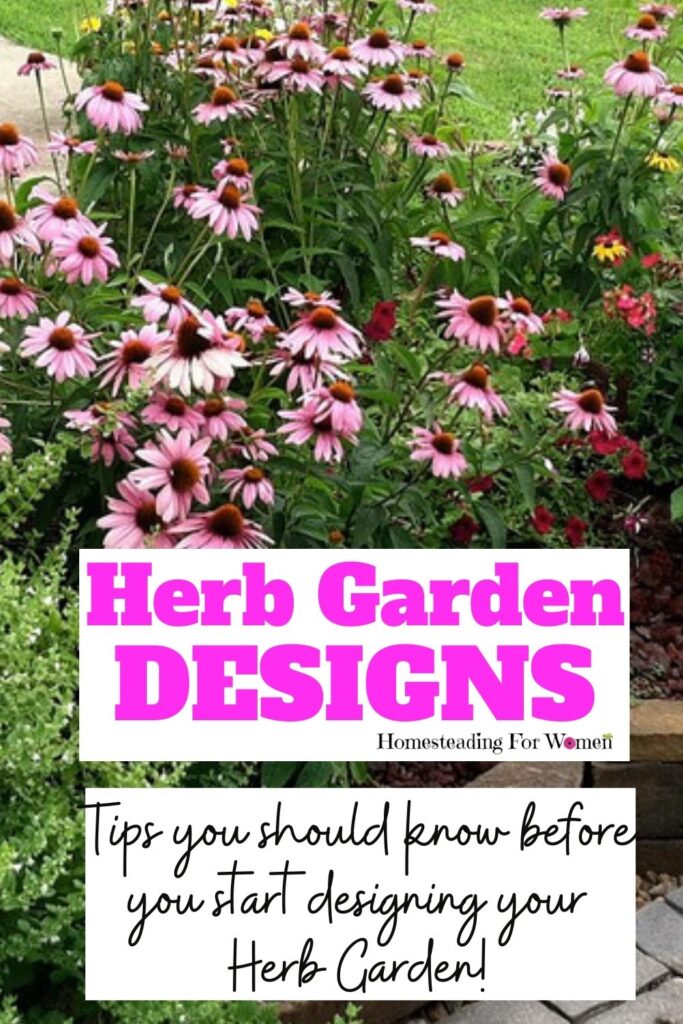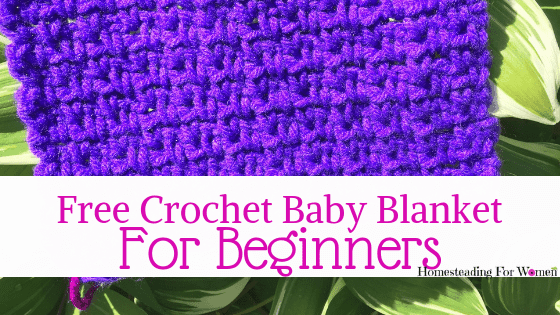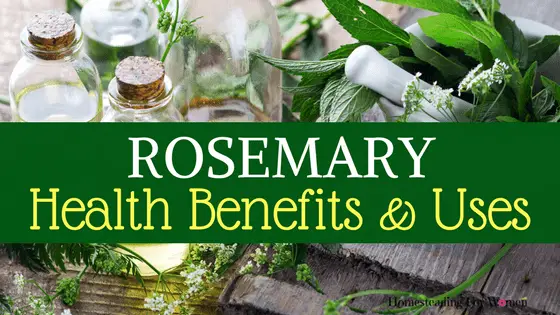Welcome to Homesteading For Women – we hope you enjoy all our tips and tricks for homestead women! Please note that we use affiliate links and ads to generate income at no cost to you.
Let’s Plant An Herb Garden!
When thinking about different herb garden designs, you’ll want to understand the different types of herbs and when they will grow in your area. This will help you determine where you will plant them, be it in the ground or in a container so you can easily bring them inside if your winters are too cold for them to live outside.
Herb plants come in 3 different types annuals, perennials, and biennials, just like other plants. You will need to think about that before you plant them in your garden. Some won’t live from year to year outside in some climates. Like here in Southern Indiana, we have rather cold winters, and many plants won’t make it without some protection from the weather.
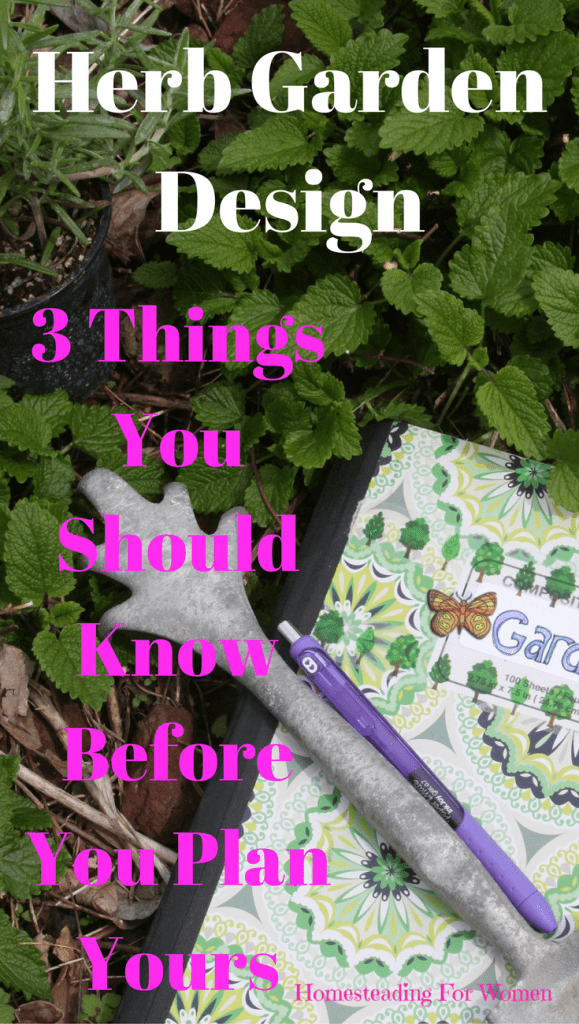
One year my Rosemary will do fine if left outside during the winter. Other times the winter is so bad it kills it, and I have to start all over the next year with it.
There are so many different types of herbs, and each one is different. If you are interested in a specific type of herb, you should research that one to understand the care needed for it and how it should be used.
I hope this will get you started in understanding general different types of herb plants and what they are used for, which will help you with your Herb Garden Designs.
Here are the Three Types of Plants
- Annuals like basil, cilantro, and summer savory will not survive a frost. They need to be planted from a seed or a small plant every year.
- Perennials like sage and winter savory can survive colder temperatures and will return year after year.
- Biennial herbs are plants that form leaves in their first growing season and flowers and seed in the second season, then die. Biennial herbs like parsley, angelica, or caraway should be sown in late spring directly into the garden.
Tips On How To Plant Herb Seeds
Prepare the soil first by working it to a fine texture and wet it slightly. Plant the seeds in shallow rows, then firm the soil on top of them. Fine seeds can be planted in a mixture of sand which will allow them to spread more evenly. You can also cover the bed with wet burlap or paper in order to keep the soil moist during germination.
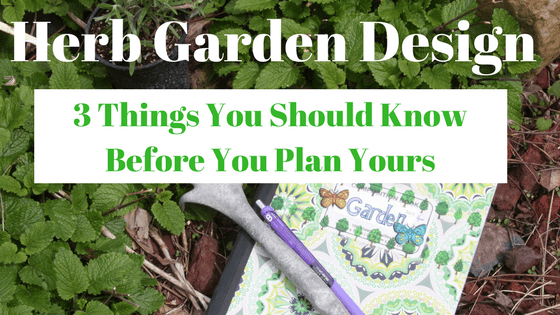
Group Them by How They Will Be Used
Culinary, Aromatic, Herbal Medicine, and Beauty are just a few groups that you could grow your garden. When thinking about how you will design your herb garden, this might be something to think about. Also, a little tip if you get mint or lemon balm. Just be sure to plant it in its own container, or you will be like me and have lemon balm taking over your garden and then some in about 4 years. 🙂
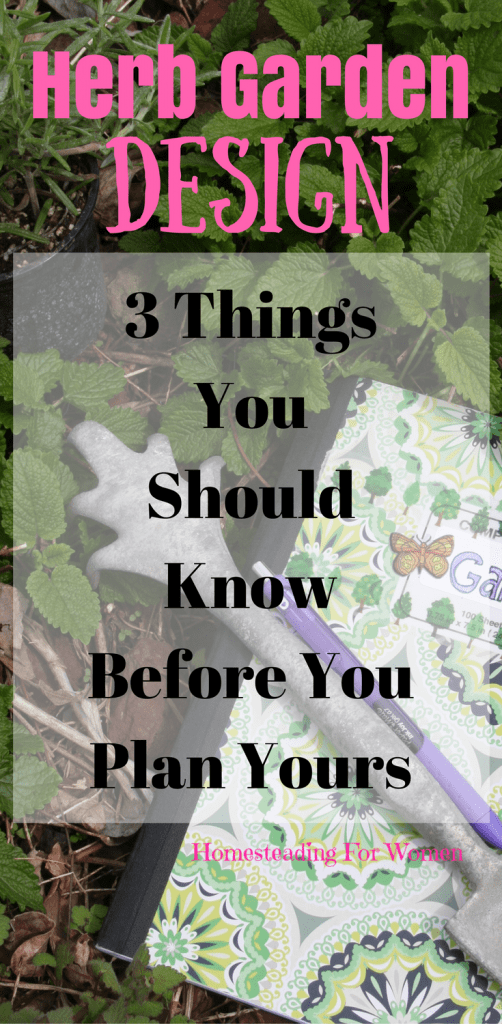
Herb Groups and Uses
Herbs are also grouped into the categories for which they are used. Culinary herbs are probably the most useful to herb gardeners. However, they have a huge range of different uses in cooking.
Because of their strong flavors, herbs like chives, thyme, basil, sage, savory, and marjoram are generally used in small quantities to add flavor to different types of food. Parsley is an extremely popular herb that is used mostly as a garnish.
Aromatic herbs have pleasant-smelling flowers or foliage. Oils from aromatic herbs like lovage, mint, and rosemary can be used to make different types of perfumes, toilet water, or other various scents. Parts of aromatic herb plants used intact can also be used in the home to scent linens or clothing.
Herbs can be dried and then made into potpourri, which will enable them to retain their aroma for a longer period of time. Lavender and lemon verbena are great herbs to use for potpourri.
Some herbs are also used for medicinal purposes. For centuries herbs have been thought to have the ability to cure the body. Present medical knowledge recognizes that some herbs are beneficial to one’s health, others are overrated. Herbs grown for medicinal purposes should be used carefully. Some herbs are harmless, but others can be dangerous if eaten.
Some herbs are not used for their flavor, power to heal, or fragrance. Some herbs are also used for their beauty. Ornamental herbs have brightly colored flowers and foliage. Many have whitish or various light-colored flowers like valerian which has crimson blossoms, and borage and chicory, which grow gorgeous blue flowers.
While herbs can be categorized into these different categories of uses, many herbs have multiple purposes. For example, mint may be used for cooking, tea, and pest control. Whatever the reason you have an interest in herbs, by understanding herb garden plants, you are able to pick the herbs that will be most useful to you.
Happy Herb Garden Planning!

If you like this article and would like to really get your hands dirty, then I recommend my Herb Garden Journal Planner. Use Coupon Code HERB50 to get 50% off for a limited time.
